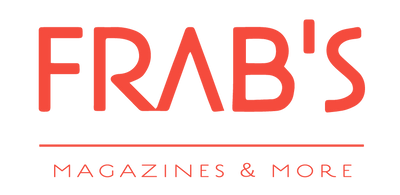Pantheon, a chameleonic magazine
When asked what distinguishes an independent magazine from a mainstream one, generally one of the first things that comes to mind is the high level of experimentation with which these magazines offer themselves to the reader. Out of the lines (and graphic cages), the "indiemag" are characterized precisely by their ability to be free from claustrophobic editorial constraints and to invent new languages, aesthetic and content, which are for the almost exclusive use and consumption of the rotating community. around the magazine itself.
Among all the magazines we have had the good fortune to read, we have found one that reaches a truly maximum level of experimentation and that we could define as chameleonic because it is able to adapt and modify itself based on the content it hosts, in form, in the header and even in the name.
We are talking about a brand new Italian limited edition illustration magazine (150 pieces), already very close to sold out. Is called Pantheon, or rather this first edition is called Pantheon, because what will happen from the next issue is not yet known.
Intrigued by a choice as unusual as it is extreme, we asked its creators, Alessandro and Andrea, to tell us something more about their magazine.
How would you describe Pantheon to people who don't know you?
An annual magazine in which graphic designers, illustrators and visual producers think and produce an image around a central theme chosen from the start and the same for everyone. The themes dealt with take free rein through a series of images from the visions of
each artist called to collaborate. The idea is to create an editorial project that, like a liquid, adapts to its container, taking on a constantly changing shape, in fact the name, contents and visual aspect of the
magazine will change according to the topic covered in each issue.
The first time we spoke and you told me about the magazine, I was struck by the fact that with each issue the name and format will change. An extremely courageous choice. At this point I wonder what is the real name, if there is one, of the magazine, and why you want to embark on this experiment.
The goal is to eliminate the classic reference points of a "branded" magazine, which is why we don't have a real name. We like this concept of continuous mutation. For us it is much more stimulating and fun to rethink everything from scratch every time: name, logo
and visual identity.
The first issue was made in full pandemic. Has this influenced its contents?
This ISSUE 0 actually had a rather long and troubled gestation. The concept was defined in October 2019 and in March of this year, when the lockdown was triggered, we were ready to go to press. There were moments of stalemate in which we reviewed and concluded the ancillary processes and thought about the organization and preparation of the launch event. The contents express visions prior to the pandemic even if the pandemic has certainly given us the opportunity to look at our magazine from a different point of view. For this we have added a small note in which
let's explain this concept.
How did you choose the theme of this issue?
At the time the magazine was conceived, we were developing two independent projects but both related to religions, so this theme was also very present in our discussions. So when we decided to start this journey, the theme of religiosity emerged almost naturally. Furthermore, from a design perspective, it seemed appropriate to us
associate the number zero with an abstract theme such as that of divinities and religions.


The illustrations are interspersed with questions from readers to the editor. A literary trick that we really liked, especially for the insightful answers provided that tell what is your vision of the new divinities. How did you choose this unusual narrative form?
The expedient of the letters to the editor helped us to offer an ironic interpretation and to play down the issues dealt with. The reader / director relationship can then also be interpreted as a transfiguration of
dialogue between faithful and divinity. The reader asks very convoluted questions, which are however cleverly resolved by the director. However, many questions, as in the religious experience, remain open.
How did you select the projects and artists hosted in the pages of the magazine?
Being both illustrators, many of the artists we hosted in ISSUE 0 are guys we know personally and whose work we appreciate. The remainder of the selection was made through Instagram which is now an excellent showcase full of
ideas and visual inspirations. The illustrators were chosen both for the quality of their research and for their adherence to the theme of the magazine.
What is the future of your magazine?
We would like to create, through the various issues of the magazine, a narrative path that touches various themes and that involves an increasing number of artists. So we aim to have fun and experiment continuously, while also trying to create a beautiful community of
image makers.
And the future of print magazines in general?
We cannot know this. Although print media is a declining sector, we believe and hope that it is not destined to totally disappear. Surely an aspect that is becoming increasingly important is that of physical experience, the book comes
in fact also conceived as an object, which is why the choice of printing techniques and materials is very important. What ISSUE 0 taught us is that in modern society physical objects can survive and not be swept away by the digital tsunami only if
they take on an almost "sacred" value.
And we at Frab's can only agree.
Find Pantheon's number zero in our online shop HERE
